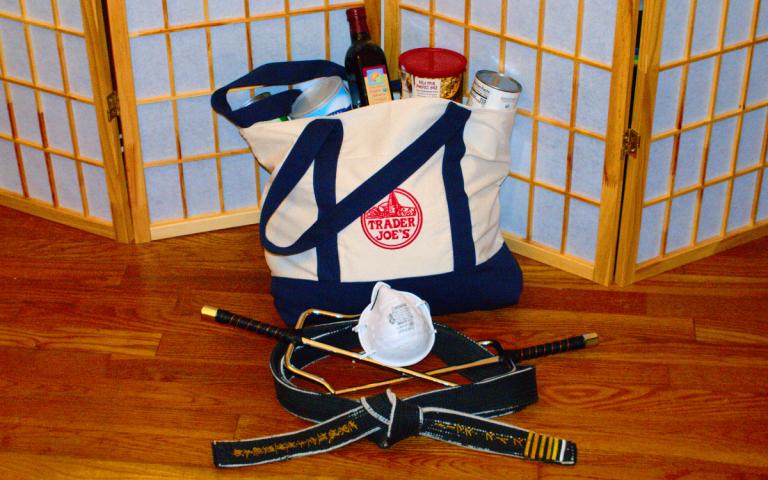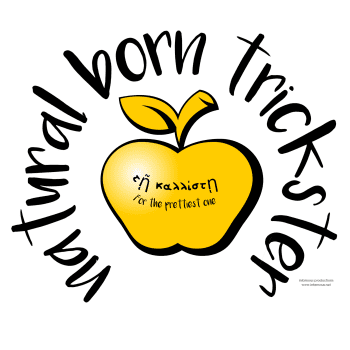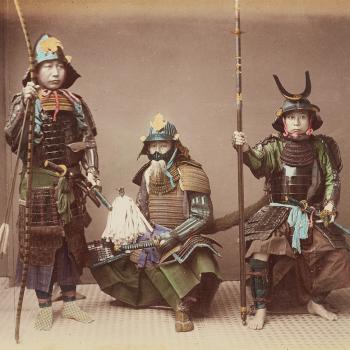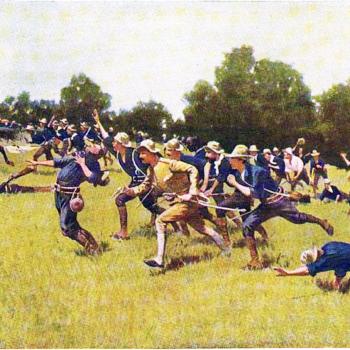During the COVID-19 crisis, for many of us not on the front lines the most dangerous thing we do may be grocery shopping.
A grocery run exposes us to many other people in a closed environment. In this pandemic, such an operation requires attention if it is to be accomplished safety.
But on my shopping trips over the past few weeks I’ve been struck by how distracted and unfocused many of my fellow shoppers are.
So in this post I’d like to use four fundamental concepts from the Japanese martial arts to discuss strategies for safer and smoother shopping. And perhaps in the process give an example of how the study of the martial arts has much broader application to our lives than merely punching and kicking.
Yōi: Get Ready
In many styles of karate, before we begin any drill we execute a brief preparatory movement. This consists of taking a deep breath in combination with a simple circular movement of the arms and a tightening of the legs — sort of compressing the muscles of the body as if squeezing a spring, making it ready to release into sudden movement.
The instruction for this is “yōi” (用意), usually translated as “get ready”. I’ve seen in compared to the “get set” in “on your mark — get set — go!”
The kanji 用 indicates the idea of a use or task, while 意 indicates thoughts and feelings, the heartmind. At the risk of over-reading, we might say that in this context “yōi” means “prepare your heart and mind for the task at hand.”
I like what one of my fellow instructors says of it: “Yoi means ‘get ready’. Ready for what? Anything.”
As Sun Tzu wrote, “[T]he general who wins a battle makes many calculations in his temple ere the battle is fought. The general who loses a battle makes but few calculations beforehand. Thus do many calculations lead to victory, and few calculations to defeat: how much more no calculation at all!”
Any successful endeavor requires preparation. So before you go grocery shopping, get ready! Calculate and plan. Have your mask, and gloves or hand sanitizer, ready. And have your shopping list! Know what you are there to get, what your mission is.
Zanshin: Total Awareness
The preparation of “yōi” includes both the practical physical aspects of getting things into position, and entering into a focused state of mind.
The state of mind we’re aiming for is called “zanshin” (残心) in Japanese. A literal translation is “remaining heart/mind”, but “mind without remainder” — nothing left behind, all in — might be closer to the meaning. The “zan” 残 is the same as in “zangyō” meaning “overtime work”; perhaps “mind working overtime” captures part of it.
Martial arts experts Christopher Caile and Deborah Klens-Bigman explain it by invoking a samurai maxim: “When the battle is over, tighten your chin strap.” That is, don’t assume the battle is over after the initial engagement. Maintain a heightened sense of awareness of everything going on around you. (Without falling into dysfunctional hypervigilance and fear.)
Csíkszentmihályi’s notion of “flow” is another way to describe it: action effortlessly joining with awareness to respond appropriately to conditions in the present moment, without intellectual reflection or discrimination.
So once you enter that grocery store, let all other ideas leave your mind. You are there on a mission, just as a fighter in the ring or a soldier in the field is.
Shopping is not a social activity anymore, not a family outing or a chance to meet your friend for a chat, not a time to pause to pull out your phone and read your texts, blocking up the aisle as no one can get by you without coming closer than social distancing guidelines call for. Stay in the game.
And maintain that awareness as you load you car, even as you drive home. You’re not off the battlefield until you can wash you hands.
Ma’ai: Control the Distance
When it comes time to face an opponent, one of the fundamental concepts in Japanese martial arts is ma’ai (間合い): controlling the fighting distance. More literally, ma’ai refers to the “interval”, in both space and time. A combatant’s preferred ma’ai is a function of their raw spacial reach (possibly augmented by a weapon), but also their skill and speed, factors on the time dimension.
For example, as a shorter man (5’7″) with relatively short legs, I have to be able to get close to my opponent in order to strike. A taller opponent will want to keep me to the outside at the end of their own fist or foot; to score on them, I have to control the distance to be either close to them, or outside their range but able to move quickly to a striking position.
The key is that the fighter who controls the distance is the one likely to win the fight.
When I teach self-defense classes, I simplify this into the notion of “wingspan”: when there’s no reason to be closer, everyone should be far enough away from each other to be able to swing their arms without making contact. And as it happens, that puts our heads roughly six feet from each other.
To keep that distance, the most obvious thing to do if someone approaches you is to move back; but if you keep doing that you will quickly run out of room. Moving to the side is often preferable. Keep that in mind in navigating that crowded produce section: you have two dimension to move in, not just one.
You can also stop the other person’s advance into your space, enforce that boundary, by verbal (“Hey, six feet please”) or non-verbal communication. Of course, in the martial arts we also have the option of using force, but I would generally not recommend that option at the grocery store…at least, not for any but the worst offenders…
With zanshin awareness, we can be constantly aware of the presence and distance of others. With ma’ai, we consider what we want that distance to be, and move to make that happen.
Kime: Decide and Commit
We’ve prepared, we’ve extended our awareness, we’ve controlled our distance to set things up. At some point, the time comes to act — for example, to move into the open space in front of the frozen foods case and grab that pint of ice cream. (Vegan ice cream, in my case.)
The term “kime” refers to a quality of one’s technique that is often translated as “focus”, but more literally it means “decision” or “decisiveness”; it is the noun form of “kimeru”, to decide.
If I throw a punch with kime, I have decided exactly where it will go. Not a centimeter to the left, right, front, or back of that. Part of that is fixing exactly where in space my body is, by muscular effort, but more important is the decisiveness of the action. If there happens to be a board, concrete block, or a part of my opponent’s body, between my starting point and that determined end point, it does not stand in the way or cause me to hesitate.
There is a memorable scene in The Karate Kid which I often quote to my students. Mr. Miyagi asks Daniel if he is ready to begin training, and Daniel replies, “I guess so.”. Miyagi tells Daniel that the situation is like walking down a road: if you walk down the left side of the road or the right side, it’s safe, but if you try to walk down the middle of the road, “sooner or later, hwick! Get squish[ed] just like [a] grape.” Just so, he must either decide to train in karate, or not: “You karate do ‘guess so’, hwick! Just like [a] grape.”
Kime is that decisiveness.
So before you move to that freezer case — and block everyone else in a six foot radius from access — decide what you want. Don’t step forward and then block others with your indecisiveness between chocolate and vanilla. (If you need to read labels, grab the item you need and then step back out of the way to read.)
Once you have prepared, become away of your environment, and made space to act, once the time comes pounce like a tiger on that pint of ice cream: all in, not trying to change direction in mid-leap.


















